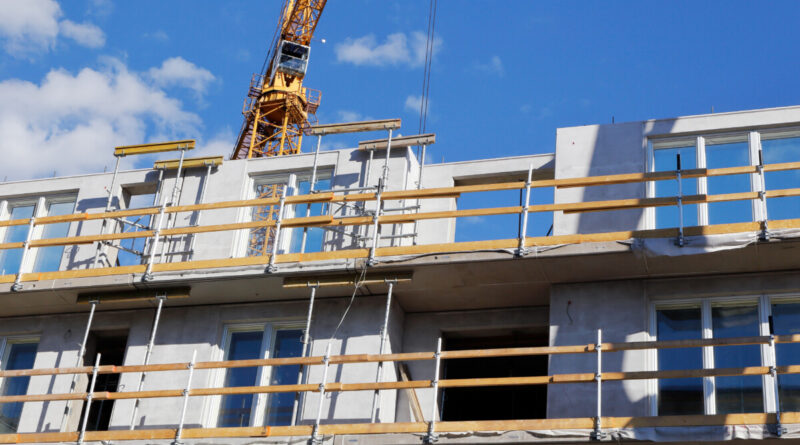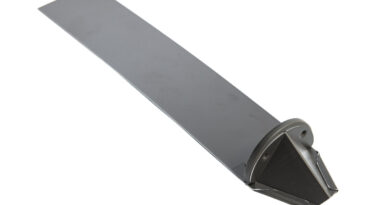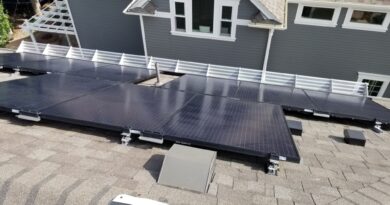Toeboards
A Critical Safety Feature for Elevated Surfaces
by John Noriega, PE, structural engineer, Diversified Fall Protection

In any workplace where there is a risk of falling objects, toeboards are a critical safety feature that should not be overlooked. Toeboards serve as a barrier along with guardrail systems to help prevent objects from rolling or sliding off the edge of an elevated surface and causing injury to workers below.
Toeboards are typically required in facilities and structures where there is a risk of falling objects. Construction sites, industrial plants, and warehouses are some examples where elevated platforms, walkways, or storage areas may require toeboards. In these settings, workers may be working on scaffolds or elevated structures, which can pose a risk of tools, equipment, or materials falling off and causing injury or damage to equipment below.
To ensure the effectiveness of toeboards in preventing objects from falling off elevated surfaces, both ANSI and OSHA 1910 have set specific requirements. While there are some similarities between the two sets of requirements, there are also some differences that employers should be aware of. ANSI Standard A1264.1-2017 specifies that toeboards must be installed where there is a risk of falling objects, and the height of the toeboard must be at least 4” from the surface it is protecting. The gap between the toeboard and the surface it is protecting must be no more than 1/4” to prevent small objects from falling through, and the toeboard must be installed along the entire length of the exposed edge of the elevated surface.
Similarly, toeboards must be installed on all open sides of a platform, and the height of the toeboard must be at least 3-1/2” measured from the working surface to the top edge of the toeboard. Toeboards must be able to withstand a force of at least 50 lbs. applied in any downward or outward direction, and they must be solid or have openings no larger than 1” in diameter and shall not have a gap greater than 1/4” from bottom edge of toeboard to the working surface. Special consideration shall be taken when tools or materials will be stacked up on an elevated surface at which point the employer is required to install paneling or screening between the toeboard and the mid rail of the guardrail system.
Toeboards can be made from a variety of different materials, depending on the specific needs of the workplace. Some common materials used for toeboards include wood, metal, and plastic. Wooden toeboards are a popular choice due to their affordability and ease of installation. They can be made from a variety of different wood types, such as fir, spruce, or pine, and are typically attached to the work surface using lag screws or carriage bolts.
Metal toeboards, on the other hand, are more durable and resistant to weather and corrosion. They can be made from materials such as steel, aluminum, or stainless steel, and are typically attached to the work surface or guardrail systems using welds or clamps. Plastic toeboards, made from materials such as polyethylene or polypropylene, can provide a lightweight and cost-effective option for some workplaces. When attaching toeboards at a working surface, it is important to use appropriate hardware to ensure that the toeboard is securely fastened.
Toeboards are a vital safety feature that complement other edge protection systems to provide comprehensive fall protection measures in the workplace. They not only help prevent objects from falling off the edge of an elevated surface but also serve as a visual warning to workers that they are approaching the edge of a surface, helping to prevent workers from inadvertently stepping too close to the edge and potentially losing their balance.
The importance of toeboards in preventing workplace accidents cannot be overstated. Without proper installation and maintenance of toeboards, workers may be at risk of serious injuries or even death. Here are some examples of accidents that could have been prevented with the installation of toeboards: a construction worker kicks a heavy tool from an elevated platform, which falls and injures a worker below; a maintenance worker pushing a rolling cart approaches a mezzanine edge too rapidly and materials slide off the cart as the wheels go over the edge; and a warehouse worker accidentally nudges a heavy box from an elevated mezzanine, which falls and injures a co-worker working below.
By implementing the appropriate fall protection measures, including the installation of toeboards, employers can help prevent these types of accidents from occurring. However, it is important to note that toeboards alone cannot prevent workers or objects from falling off an elevated surface. Therefore, it is critical that employers also provide comprehensive fall protection training to their workers, and implement additional safety measures such as guardrails, safety nets, or personal fall arrest systems where appropriate.
Toeboards are an essential safety feature that can help prevent workplace accidents and injuries. Employers should prioritize the installation and maintenance of toeboards in any facility or structure where there is a risk of falling objects. They should also ensure that workers receive adequate training on the use and purpose of toeboards, as well as how to identify and report any issues with toeboards or other safety equipment.
Employers should also be aware of the differences between the toeboard requirements set forth by ANSI and OSHA 1910, and ensure that their toeboards meet the requirements of the applicable standard. By prioritizing safety and implementing comprehensive fall protection measures, employers can create a safer workplace environment for everyone.



